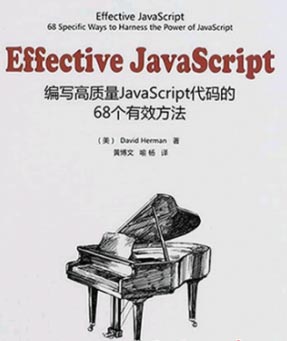[Effective JavaScript 笔记]第24条:使用变量保存arguments对象
Posted 脚后跟着猫
tags:
篇首语:本文由小常识网(cha138.com)小编为大家整理,主要介绍了[Effective JavaScript 笔记]第24条:使用变量保存arguments对象相关的知识,希望对你有一定的参考价值。
迭代器(iterator)是一个可以顺序存取数据集合的对象。其一个典型的API是next方法。该方法获得序列中的下一个值。
迭代器示例
题目:希望编写一个便利的函数,它可以接收任意数量的参数,并为这些值建立一个迭代器。
测试代码好下:
var it=values(1,4,1,4,2,1,3,5,6); it.next();//1 it.next();//4 it.next();//1
分析:由于values函数需要接收任意多个参数,这里就需要用到上一节讲到的构建可变参数的函数的方法。然后里面的迭代器对象来遍历arguments对象的元素。
初步编码
function values(){
var i=0,n=arguments.length;
return {
hasNext:function(){
return i<n;
},
next:function(){
if(this.hasNext()){
return arguments[i++];
}
throw new Error("已经到达最后啦");
}
}
}
用上面的测试代码进行测试
var it=values(1,4,1,4,2,1,3,5,6); it.next();//undefined it.next();//undefined it.next();//undefined
错误分析
代码运行结果并不正确,下面就对初始的编码程序进行分析。
function values(){
var i=0,n=arguments.length;//这里没有错误,arguments是values里的内置对象
return {
hasNext:function(){
return i<n;
},
next:function(){
if(this.hasNext()){
return arguments[i++];//错误出现在这里,arguments是next方法函数的内置对象。
}
throw new Error("已经到达最后啦");
}
}
}
这里的指代错误,很像是另一个让人头痛的对象this。处理this的指向时,通常是使用变量和保存正确的this。然后在其它地方使用这个变量。那么arguments对象的解决方案就出来了,借助一个变量来存储,这样arguments对象的指代就没有问题了。
再次编码
function values(){
var i=0,n=arguments.length,arg=arguments;
return {
hasNext:function(){
return i<n;
},
next:function(){
if(this.hasNext()){
return arg[i++];
}
throw new Error("已经到达最后啦");
}
}
}
运行测试代码
var it=values(1,4,1,4,2,1,3,5,6); it.next();//1 it.next();//4 it.next();//1
结果和预期的相同。
提示
-
当引用arguments时当心函数嵌套层级
-
绑定一个明确作用域的引用到arguments变量,从而可以在嵌套的函数中引用它
附录一:迭代器
迭代器(iterator)有时又称游标(cursor)是程序设计的软件设计模式,可在容器上遍历的接口,设计人员无需关心容器的内容。
迭代器UML类图
迭代器js实现
对设计模式了解一点点,但具体项目中,有得多的也就是工厂模式,其它很少用,下面是一个简单的实现,不对的地方,欢迎交流。
代码如下
function List(){
this.data=[];
}
List.prototype={
add:function(){
var args=[].slice.call(arguments)
this.data=this.data.concat(args);
},
remove:function(i){
this.data.splice(i,1);
},
iterator:function(){
return new Iterator(this);
}
}
function Iterator(list){
this.list=list;
this.cur=0;
};
Iterator.prototype={
hasNext:function(){
return this.cur<this.list.data.length-1;
},
next:function(){
if(this.hasNext()){
return this.list.data[this.cur++];
}
throw new Error(\'已经到底了~\');
},
remove:function(){
this.list.remove(this.cur);
}
}
var list1=new List();
var it=list1.iterator();
list1.add(3,2,3,4,1,6,10,8,9);
it.next();//3
it.next();//2
it.next();//3
以上是关于[Effective JavaScript 笔记]第24条:使用变量保存arguments对象的主要内容,如果未能解决你的问题,请参考以下文章
 迭代器(iterator)是一个可以顺序存取数据集合的对象。其一个典型的API是next方法。该方法获得序列中的下一个值。 迭代器示例 测试代码好下: 初步编码 用上面的测试代码进行测试 错误分析 代码运行结果并不正确,下面就对初始的编码程序进行分析。 这里的指代错误,很像是另一个让人头痛的对象th
迭代器(iterator)是一个可以顺序存取数据集合的对象。其一个典型的API是next方法。该方法获得序列中的下一个值。 迭代器示例 测试代码好下: 初步编码 用上面的测试代码进行测试 错误分析 代码运行结果并不正确,下面就对初始的编码程序进行分析。 这里的指代错误,很像是另一个让人头痛的对象th
